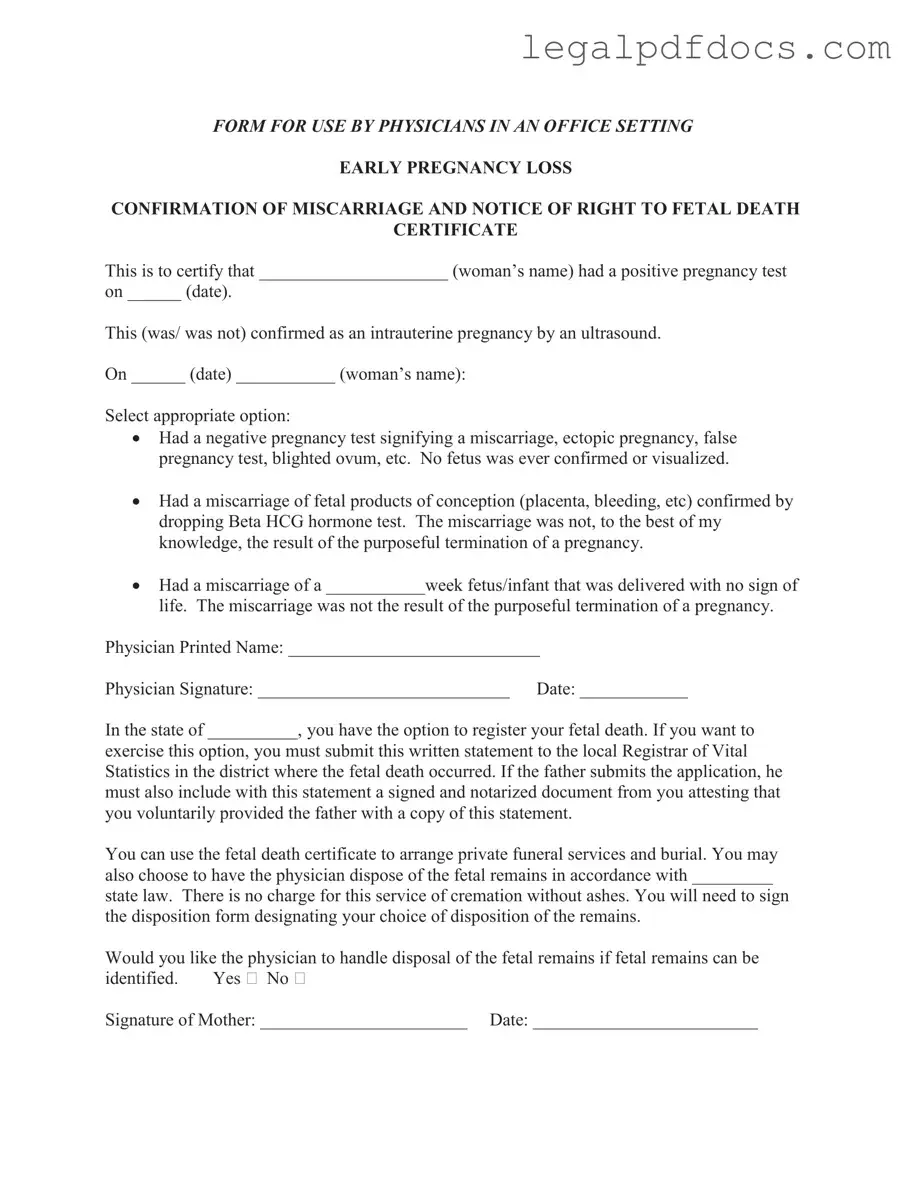Misconception 1: The Miscarriage Discharge Paper is only for women who have had a confirmed miscarriage.
This form can also be used for women who experienced a negative pregnancy test, indicating a miscarriage or other early pregnancy loss. It serves multiple purposes, including documenting various outcomes related to early pregnancy.
Misconception 2: The form is only necessary for medical records.
While it does serve a medical purpose, the form is also crucial for the mother’s rights regarding fetal death registration. It provides important documentation that can be used for legal and personal matters.
Misconception 3: Only the mother can register the fetal death.
In fact, the father can also submit the application to register the fetal death. However, he must include a notarized document from the mother confirming that she provided him with a copy of the statement.
Misconception 4: There is a fee for the physician to dispose of fetal remains.
Many physicians offer cremation without ashes at no charge. This service is often included as part of the care provided following a miscarriage.
Misconception 5: The form must be filled out immediately after the miscarriage.
While timely completion is important, there is often flexibility in when the form can be filled out. It is essential to ensure that it is completed accurately, regardless of timing.
Misconception 6: The form is not needed if the pregnancy was very early.
Even in early pregnancy losses, this form serves as an official record. It can be important for emotional closure and for any potential legal matters regarding fetal death registration.
Misconception 7: The physician's signature is optional.
The physician’s signature is a critical component of the form. It validates the information provided and confirms the medical circumstances surrounding the miscarriage.
Misconception 8: Filling out the form is a complicated process.
The form is designed to be straightforward and user-friendly. With clear instructions and options, it aims to make a difficult situation a little easier for those involved.
